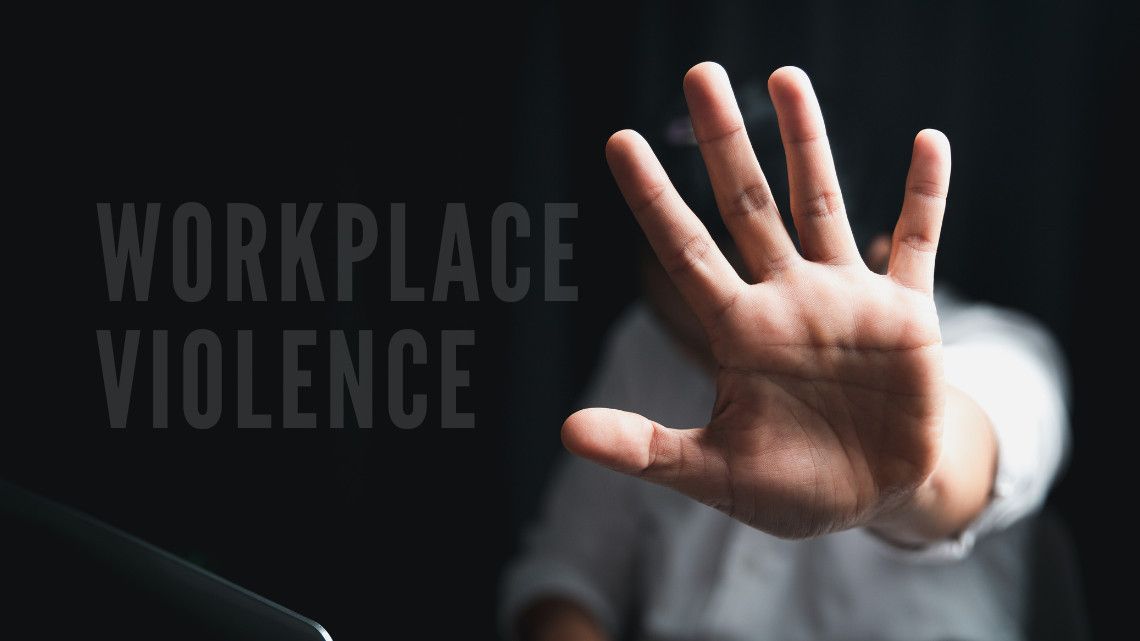
Why You Need OSHA Training in Healthcare
The Occupational Safety and Health Act of 1970 aims to protect American workers and prevent work-related injuries, illnesses, and deaths by setting and enforcing standards. As per OSHA guidelines, employers must comply with OSHA regulations. Therefore, they must provide the explicit safety and health training their workers need to perform their jobs safely.

Who Needs OSHA Training?
All healthcare workers with potential exposure to hazards must receive training on specific safety hazards and precautions (controls) before engaging in potentially hazardous activities. The timeliness of training is critical when it comes to adhering to OSHA regulations. While all employees are at risk, the risk of injuries and illnesses is even greater for newly hired employees. For this reason, all employees should receive OSHA training within the first ten days of employment and annually thereafter, as per OSHA requirements. Safety (OSHA) Officers should also receive training on identifying hazards, developing plans, and maintaining records.
What Help is Available?
Understandably, many employers are seeking assistance with the OSHA training process. Lack of time, resources, and intricate knowledge of ever-changing OSHA guidelines can expose employers to substantial risks and non-compliance penalties. Fortunately, employers don’t have to navigate this arduous process alone. At Healthcare Compliance Associates (HCA), we live and breathe OSHA compliance, so you don’t have to! Our job is to save you time, reduce risk exposure, and help you provide your employees with the best work environment possible.
Our specialists at HCA develop and conduct engaging training programs (on-site, virtual, and online), create practical checklists to make compliance easier, provide monthly newsletters with updates to stay informed, assist with setting up plans and policies, and provide personalized support to help in an inspection and with day-to-day challenges.
Working with an OSHA compliance company such as HCA has many advantages. Five of the most notable of these are:
Protects Employees
For employees, on-the-job injuries and illnesses can have devastating effects. According to a study by the American Journal of Industrial Medicine, a single workplace illness or injury costs an employee and their family on average $8,000 out of pocket. Employees may be forced to dip into their savings or default on payments. As a result, these employees are much more likely to lose their homes, cars, and health insurance.
Thankfully, you can significantly reduce the likelihood of injuries and illnesses by providing proactive and comprehensive OSHA training to all employees through a reputable OSHA compliance management company. Through this commitment to safety compliance, you can prevent much physical pain, emotional suffering, and financial stress on your workers. Additionally, establishing more standardized procedures creates consistency for employees, and an increased understanding of roles and expectations helps improve employee satisfaction. Smoother workflow processes and happier employees will likely result in a better patient experience…the ground on which great reputations and abundant referrals are built.
Increases Productivity and Saves You Money
According to the United States Bureau of Labor and Industries, in 2021, private industry employers reported 2.6 million non-fatal workplace injuries and illnesses. In 2020, the healthcare and social assistance industry had the most reported injuries and illnesses at over 800,000. Furthermore, healthcare and residential care had the highest number of incidents resulting in days away from work.
The financial toll of illnesses, injuries, and workplace fatalities can be enormous for employers. In today's business environment, this cost can be the difference between running in the black or the red. Small and medium-sized businesses are especially vulnerable to the impact of workplace injuries and illnesses. Slim budgets and the nature of “work-family” environments in businesses of these sizes can cause immediate and lasting financial and emotional trauma.
A quality training program that creates awareness about safety hazards and instructs employees on preventing them is a worthy investment. Returns on OSHA training investments include increased productivity, higher worker morale with decreased absenteeism, more predictable patient care, increased profitability, improved compliance with fewer worker's compensation claims, improved patient satisfaction, reduced insurance risk exposure, and minimized legal fees. Indirectly, an investment in OSHA training can also promote patient referrals, further supplementing your bottom line.
Reduces Your Risk of OSHA Fines and Citation
Employers have a moral obligation to protect their staff from unsafe working conditions. Further, non-compliance can lead to hefty fines reaching hundreds of thousands of dollars and citations that can cause individuals to lose their licenses. In many cases, the detrimental financial effects of non-compliance can be made even worse when a company’s reputation is tarnished. Effective training will reduce the risks of employees, patients, or members of the general public filing complaints about you to OSHA.
While some of these complaints can be minor, only warranting a letter asking for an explanation with possible internal remediation of the reported hazard, others substantiate an on-site OSHA investigation. If an inspector arrived at your facility today to thoroughly examine your potential risks, work practices, and controls, will you, your employees, and your facility be prepared to withstand the rigors of an OSHA compliance audit?
An effective OSHA training company should ensure that an OSHA trainer walks through your facility annually and recommends improving compliance. Your training company will likely give you an outline of the compliance process and specific instructions on responding to a complaint. More importantly, they should also provide you access to a local trainer who can serve as your representative during an inspection, offering guidance and assistance with any necessary follow-up.
This invaluable support will likely decrease the stress level for you and your staff. Additionally, OSHA inspectors will consider your 'good faith effort' to achieve compliance through safety plans, policies, and documented training. Your efforts may decrease sanctions or even avoid them altogether. Having an OSHA training certification not only provides your staff with continuing education credits (CE’s), it may save you money in fines. Annual professional training offers peace of mind knowing you're protected if an accident, complaint, or inspection occurs.
Increases Job Satisfaction and Morale
Everyone appreciates feeling valued and respected. Offering new-employee and annual staff training demonstrates management's commitment to the safety and health of their employees. By investing in staff education, management can earn the trust and loyalty of workers and boost morale. Better morale not only increases productivity and lowers the number of absences but also reduces the number of on-site accidents.
From our experience, the most effective and productive OSHA safety programs involve multiple staff working harmoniously to achieve and maintain compliance. This team approach takes the heavy lifting off of one or only a handful of employees and encourages the whole team to prioritize safety. Management’s fostering of teamwork and unity among workers typically leads employees to feel happier, more supported, and less stressed. When people know their role and the importance of workplace safety, they feel a greater sense of belonging to the group and empathy for their co-workers. As part of a team, members work together in a productive manner that results in better patient care and outcomes.
Keeps You Current on Laws and Requirements
Under OSHA rules, all healthcare employers should know and follow governmental regulations to protect their employees. Some OSHA rules haven't changed in many years, while others are revised often. Oregon OSHA (OR-OSHA) adds additional requirements to federal laws, making standards even more stringent. As an employer, you must keep up with frequent changes to federal and state-specific laws. Unfortunately, this can be challenging and time-consuming. To exemplify the complexities of changing regulations, Oregon OSHA Covid rules have been updated 14 times since coming out in 2020.
At HCA, we conduct ongoing research to stay current on OSHA guidelines and incorporate recent changes into our training program in a practical and helpful way that you and your staff can implement quickly. Working together, we focus your employees on areas that help your patients and generate income rather than compliance.
Finding an OSHA compliance expert in your state saves you time and money. There are numerous nuances in the world of OSHA compliance, and it helps to work with someone who knows the ins and outs of federal and state guidelines. For example, understanding which government organization to listen to, The Center for Disease Control (CDC), the Oregon Health Authority (OHA), or Oregon OSHA, can be very complicated. Depending on the specific hazard topic, any of these organizations might trump the others. But how would you know? A good compliance consultant will spend countless hours researching and communicating with these organizations to understand the distinctions.
Conclusion
Establishing and maintaining OSHA compliance can be tricky. By working with a reputable OSHA compliance company, you can remove the obstacles that put you and your companies at serious risk of injuries and illnesses. In working proactively and collaboratively, we can find and fix workplace hazards before employees are injured or become ill.
Proper employee training cultivates an understanding of OSHA responsibilities and empowers staff to make good decisions. OSHA training will reduce your risk of fines, legal fees, and citations, protect your team from injuries or illnesses, increase productivity and staff morale, keep you current on relevant laws and regulations, and improve patient outcomes.
OSHA certification demonstrates that you conduct business safely and ethically according to the law. It builds trust and improves your company's reputation with patients and the community. It will also likely minimize fines if your company has a complaint filed against you or OSHA arrives for an inspection. A reputable OSHA training and support company can assist you on your ever-evolving compliance journey.
We’ve got you!
We at Healthcare Compliance Associates live and breathe compliance, so you don’t have to.
We develop and conduct engaging training programs (onsite, virtual, and online), create practical checklists to make compliance easier, provide monthly newsletters with updates to stay informed, assist with setting up plans and policies, and provide personalized support to help in an inspection and day-to-day challenges. We keep your employees working and focused on areas that help your patients and generate income. Not focused on compliance.
In just 30 days, everyone in the office can be compliant, and it can cost less than $5 per day, depending on the size of your business.












